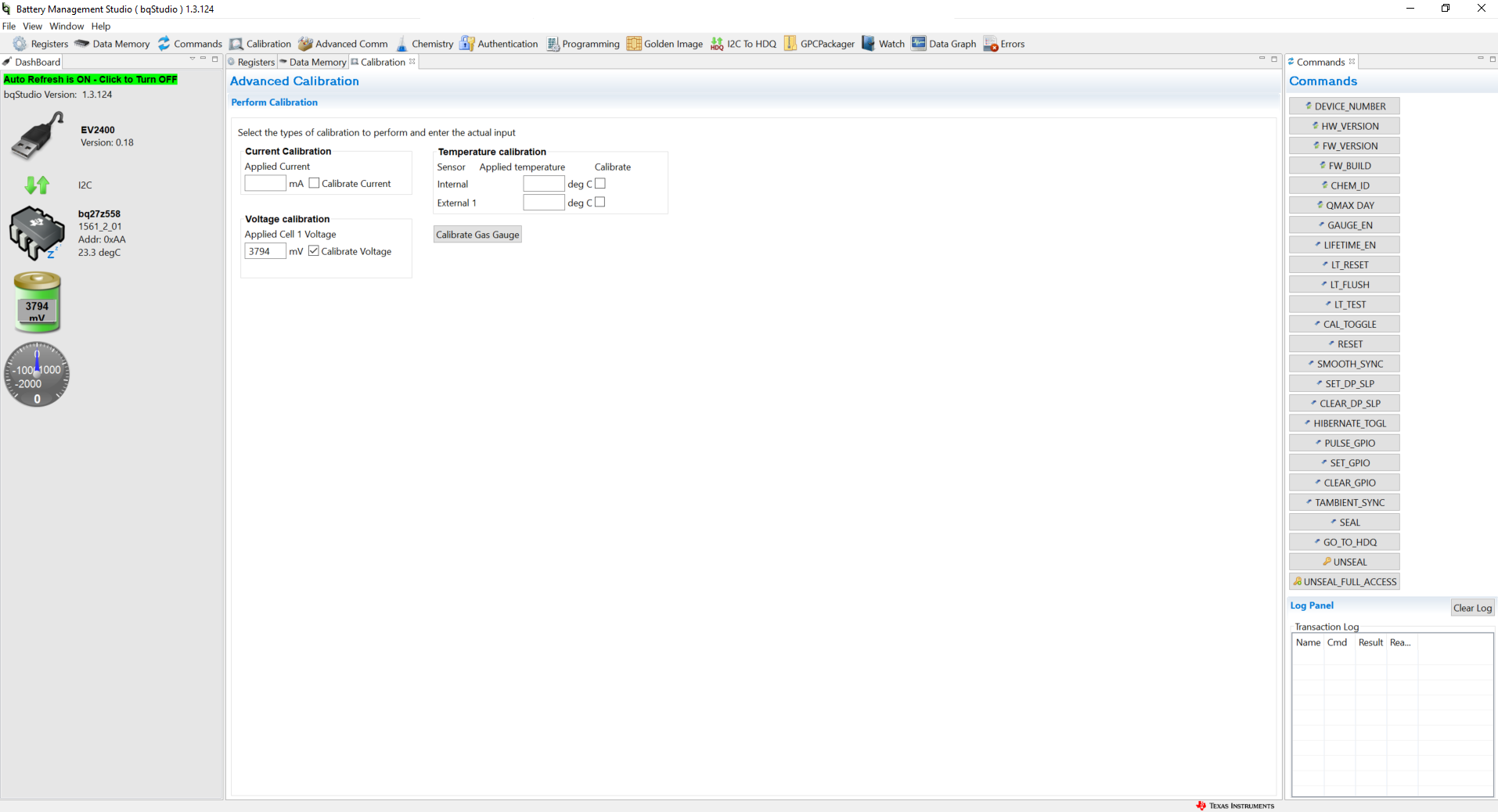SLUUCW4 November 2023 BQ27Z558
- 1
- Description
- Features
- Applications
- 5
- 1Evaluation Module Overview
- 2Hardware
- 3Software
- 4Hardware Design Files
- 5Additional Information
2.3.1 Voltage Calibration
Set up the EVM and other hardware as pictured in Figure 3-1. The BAT pins can be connected to a battery or a power supply, but the voltage of this source must be known to millivolt precision for accurate calibration.
Inside of bqStudio, navigate to the Calibration window. Then, as shown in Figure 3-7, enter the precise value of the voltage source used, check Calibrate Cell Voltage, and then press the Calibrate Gas Gauge button.
 Figure 2-7 Voltage Calibration in
bqStudio
Figure 2-7 Voltage Calibration in
bqStudio